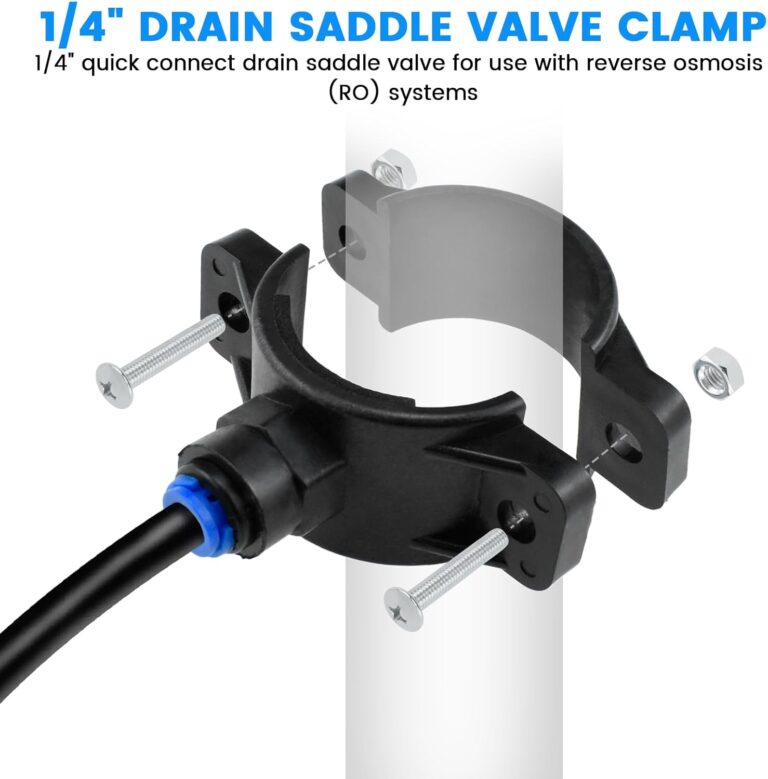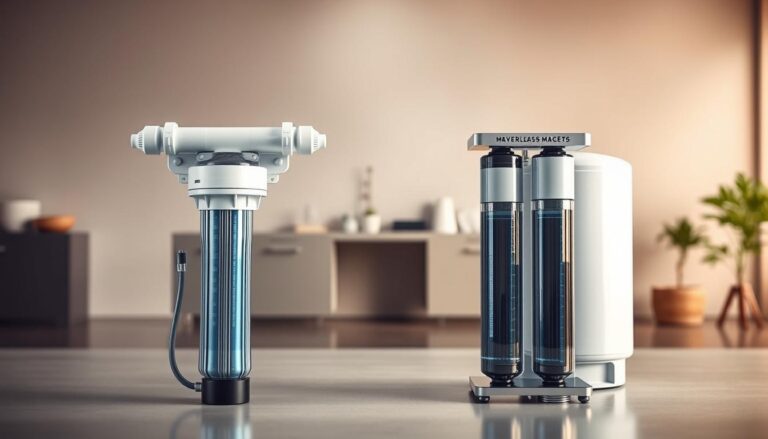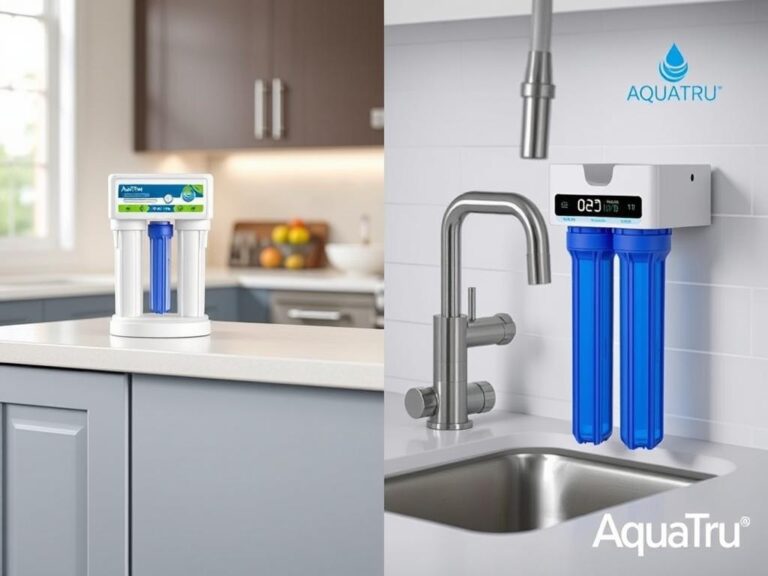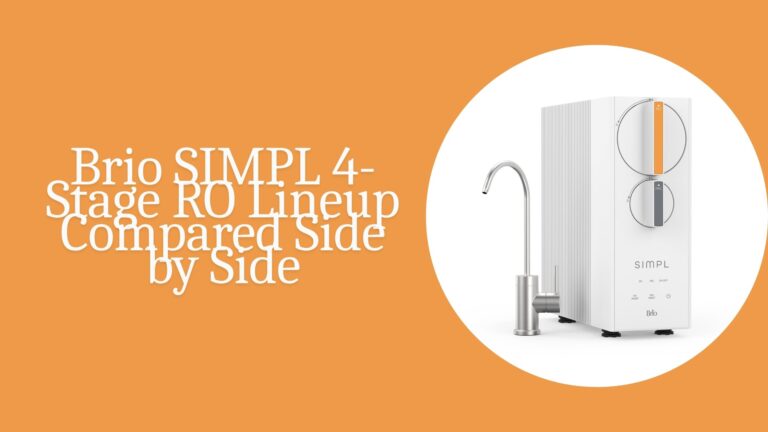How Home Reverse Osmosis Systems Transformed Water Quality: Real-Life Success Stories
Understanding How Reverse Osmosis Works
Before diving into our case studies, let’s briefly understand how reverse osmosis technology works. Unlike basic carbon filters that primarily address taste and odor, reverse osmosis is a comprehensive purification process that removes up to 99% of dissolved contaminants, including:
- Heavy metals (lead, arsenic, mercury)
- Dissolved salts and minerals
- Chemicals like chlorine and pesticides
- Microorganisms including bacteria and viruses
- PFAS (“forever chemicals”)
A typical home reverse osmosis system includes multiple filtration stages. Water first passes through pre-filters that remove sediment and chlorine, then through the semipermeable RO membrane that blocks contaminants while allowing water molecules to pass. Finally, a post-filter polishes the water before it reaches your glass. This multi-barrier approach ensures exceptionally pure drinking water.
Case Study #1: The Martinez Family in San Antonio, Texas

The Challenge: Hard Water and Chlorine Concerns
The Martinez family had struggled with San Antonio’s notoriously hard water for years. With total dissolved solids (TDS) readings consistently above 350 ppm and a strong chlorine taste, they relied heavily on bottled water for drinking and cooking.
“Our tap water left white residue on everything,” explains Maria Martinez. “We were spending over $75 monthly on bottled water, and I was concerned about both the environmental impact and the chemicals leaching from plastic bottles.”
The Solution: Under-Sink RO System Installation
After researching options, the Martinez family installed a 5-stage under-sink reverse osmosis system with a 4-gallon storage tank. The installation was completed in under three hours by a local professional.
The Results: Dramatic Improvement in Water Quality
Post-installation testing showed remarkable improvements:
- TDS levels dropped from 350+ ppm to just 15 ppm (96% reduction)
- Chlorine was completely eliminated
- Lead levels, previously at 5 ppb, became undetectable
“The difference was immediate and dramatic,” Maria notes. “Our water now tastes better than bottled water, and we’ve eliminated our plastic waste. The system paid for itself in under a year through savings on bottled water.”
According to the San Antonio Water System’s quality reports, while the municipal water meets EPA standards, RO filtration provides an additional layer of protection against emerging contaminants.
Case Study #2: The Johnson Family in Flint, Michigan

The Challenge: Serious Water Contamination Concerns
Following the widely publicized water crisis in Flint, the Johnson family lost all confidence in their tap water. Even after municipal improvements, independent testing of their water revealed concerning levels of lead (12 ppb, above the EPA action level) and copper.
“We didn’t feel safe using our tap water for anything,” says Robert Johnson. “We were using bottled water even for cooking and brushing teeth, which was expensive and inconvenient.”
The Solution: Whole-House RO System with Additional Lead Filtration
The Johnsons invested in a comprehensive whole-house reverse osmosis system with specialized pre-filtration for lead and heavy metals. The system included a 300-gallon atmospheric storage tank and distribution pump to maintain water pressure throughout their home.
The Results: Complete Peace of Mind
Independent laboratory testing after installation showed:
- Lead reduced to non-detectable levels (99.9% reduction)
- Copper reduced by 98%
- TDS reduced from 425 ppm to 12 ppm
“Having clean water throughout our entire home has been life-changing,” Robert shares. “Our children can safely bathe, we can cook without worry, and our appliances are lasting longer without mineral buildup.”
According to a EPA report on lead in drinking water, reverse osmosis is one of the most effective technologies for removing lead, capable of eliminating up to 99.9% of this dangerous contaminant.
Case Study #3: The Garcia Family in Phoenix, Arizona

The Challenge: Poor Taste and High Mineral Content
Phoenix’s municipal water, while meeting safety standards, contains high levels of dissolved minerals and seasonal taste issues. The Garcia family found their tap water unpalatable, with TDS readings averaging 450 ppm and a distinct chlorine taste during certain months.
“Our water tasted so bad that even making coffee was a challenge,” recalls Elena Garcia. “We tried pitcher filters, but they didn’t improve the taste much and needed constant replacement.”
The Solution: Countertop RO System with Remineralization
The Garcias opted for a modern countertop reverse osmosis system with a remineralization stage that adds beneficial minerals back into the purified water. This compact system required no permanent installation and produced 75 gallons of purified water daily.
The Results: Superior Taste and Convenience
After three months of use, the Garcias reported:
- TDS reduced to optimal levels (around 50 ppm with remineralization)
- Complete elimination of chlorine taste and odor
- Significant improvement in coffee, tea, and cooking flavors
“The difference in taste is remarkable,” Elena explains. “Our coffee tastes better, our ice cubes are crystal clear, and we’re drinking more water than ever before because it’s so refreshing.”
According to the Phoenix Water Services Department, while municipal water meets safety standards, aesthetic issues like taste and odor can vary seasonally. RO systems effectively address these concerns year-round.
5 Key Benefits of Home Reverse Osmosis Systems
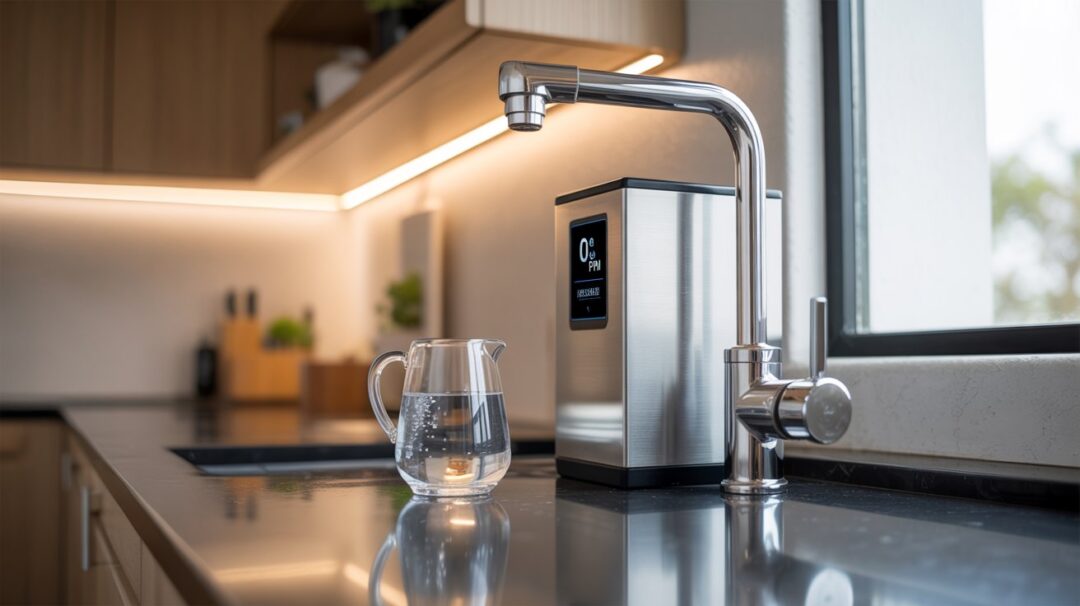
1. Superior Contaminant Removal
Home reverse osmosis systems remove up to 99% of dissolved contaminants, including those that basic filters miss. This includes heavy metals, dissolved salts, chemicals, and even some microorganisms. According to the CDC, reverse osmosis is one of the most effective technologies for comprehensive water purification.
2. Significant Cost Savings
While the initial investment in a home reverse osmosis system ranges from $200-$2,000 depending on capacity and features, the long-term savings are substantial. A family of four spending $20 weekly on bottled water ($1,040 annually) can recoup their investment in 1-2 years, with ongoing savings thereafter.
3. Environmental Benefits
By eliminating the need for bottled water, home RO systems significantly reduce plastic waste. The average American uses 167 plastic water bottles annually, but only recycles about 38 of them. A single home RO system can prevent thousands of plastic bottles from entering landfills and oceans over its lifetime.
4. Improved Taste and Cooking
Purified water enhances the flavor of beverages and food. Coffee, tea, soups, and recipes taste noticeably better when made with RO water because contaminants that affect flavor are removed. Ice cubes become crystal clear, and drinks maintain their intended taste without unwanted mineral flavors.
5. Health Protection
While municipal water is generally safe, RO systems provide an additional layer of protection against emerging contaminants, treatment byproducts, and infrastructure issues. For households with members who have compromised immune systems, this extra protection can be particularly valuable.
Maintenance Simplicity
Modern home reverse osmosis systems require minimal maintenance—typically just filter changes every 6-12 months. Many newer models include filter life indicators and quick-change cartridges that make maintenance simple even for non-technical homeowners.
Important Considerations Before Installing a Home RO System
Advantages
- Comprehensive contaminant removal
- Improved taste and odor
- Long-term cost savings vs. bottled water
- Environmental benefits from reduced plastic waste
- Peace of mind regarding water quality
Considerations
- Initial investment cost
- Some water waste during filtration process
- Requires periodic filter replacement
- May remove beneficial minerals (though many systems now include remineralization)
- Installation space requirements
System Types and Sizing
Home reverse osmosis systems come in several configurations to suit different needs:
| System Type | Capacity | Best For | Approximate Cost |
| Under-sink RO | 50-100 GPD | Single faucet, drinking & cooking | $200-$500 |
| Countertop RO | 50-75 GPD | Renters, no permanent installation | $300-$600 |
| Whole-House RO | 500-2,000+ GPD | Purifying water for entire home | $1,500-$5,000+ |
When selecting a system, consider your household size, water usage patterns, and specific contaminant concerns. A water quality test can help identify which contaminants need addressing in your specific location.
Conclusion: Is a Home Reverse Osmosis System Right for You?
The case studies we’ve examined demonstrate the transformative impact that home reverse osmosis systems can have on water quality and household well-being. From eliminating concerning contaminants to improving taste and reducing dependence on bottled water, these systems offer multiple benefits that extend beyond simple filtration.
While the initial investment and installation considerations should be factored into your decision, the long-term advantages—both financial and environmental—make reverse osmosis an increasingly popular choice for health-conscious homeowners.
Whether you opt for a simple under-sink unit or a comprehensive whole-house system, the technology behind reverse osmosis provides one of the most effective solutions available for ensuring your household has access to clean, great-tasting water directly from the tap.
Consider your specific water quality concerns, household needs, and budget to determine which reverse osmosis solution might be right for your home. With proper maintenance, these systems can provide years of reliable service and peace of mind about the water your family consumes every day.
Ready to Transform Your Home’s Water Quality?
Join thousands of homeowners who have discovered the difference a quality reverse osmosis system can make. Affordable, effective, and easy to maintain – pure water is just a click away.
Experience the Difference of Pure, Clean Water Today
Join thousands of satisfied homeowners who have transformed their water quality with a home reverse osmosis system. With options for every budget and household size, there’s never been a better time to invest in your family’s health and comfort.
Browse Top-Rated RO Systems on Amazon
As an Amazon Associate, we earn from qualifying purchases.


